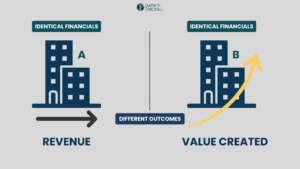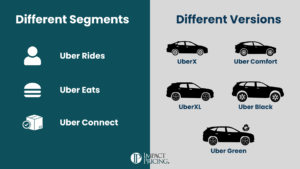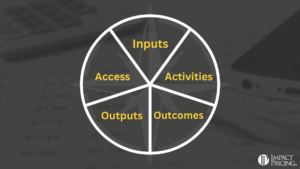The Advantages & Disadvantages to Subscriptions
The subscription business model is taking the business world by storm. As business people, we all should be offering subscriptions or at least figuring out how to do so. Quick confession: Impact Pricing today does not offer a subscription, but we are working on building the right model.
There are many reasons we want to offer subscriptions. It’s a fabulous business model for all of the reasons listed below (and probably more).
Growth
Research shows that subscription-based companies are growing much more rapidly than the Fortune 500. Maybe you could argue it’s because the Fortune 500 are larger and less nimble. But there are some significant reasons why subscription companies grow faster:
- Customers have much lower entry costs, so it’s easier to get them to buy. They don’t have to commit to a large upfront expense. Often we can get B2B users to buy without getting our salespeople or their purchasing people involved.
- As long as we can keep those customers happy, they continue to pay us. We essentially start the year out with whatever sales we ended with last year. That means each new sale is incremental revenue. Contrast this to a traditional business where each year starts at zero and they have to hustle just to get back to where they started.
- As our customers grow, as they use more of our product, we make more money. In traditional businesses, once the sale is made we are off to the next one. The customer already paid us so we don’t really care how much customers use our product.
There are legitimate reasons why subscription companies grow faster than traditional businesses.
Lifetime Value
Subscription companies have higher customer Lifetime Value (LTV). Once we land a customer, we work hard to keep them happy and paying us. We fix the bugs and add new capabilities. We build better relationships because we care – we really care. A traditional business cares until the moment they get the order and then they don’t come back to the customer until the purchase cycle comes around again.
We also have higher LTV because customers tend to be more sticky. There is no obvious time to shop again because our subscription product is constantly being improved. Switching costs are often relatively high and because the subscription product is still working well there is no reason to incur those switching costs.
Finally, making these decisions is hard. Nobody likes doing it. As long as our subscription continues to solve the problem, inertia keeps the customer with us.
Another reason for higher LTV is we focus on growing our customers. Yes, we have to win and keep a customer, but we can also grow them. As we provide quality solutions and support and build a great relationship, the customer trusts us and relies on us. This gives us the opportunity to earn more revenue from each customer. We do that by choosing the right pricing metric (what we charge for), creating upsell and cross-sell offers, and in some cases even by raising prices. Some of the best subscription companies earn an average of 40% more year on year from their existing customers. That’s 40% growth without even considering new customers.
Investors’ perspective
As subscription companies, we get higher valuations than our traditional counterparts by investors. We achieve 4 to 10 times higher multiples of revenue. For any company raising money or in the public markets, this is huge.
Investors love our subscription businesses because the revenue and growth are predictable and smooth. It is common that 70% of next year’s revenue goal is accounted for on the first day of the year.
Subscription Company Disadvantages
As subscription companies, we have some fantastic advantages. But we have one huge disadvantage, which is cash flow. When a traditional business lands a new customer, they get all of their money upfront. In subscription, it’s common to get 1/36th per month. It takes three years before we have received the same revenue as a traditional business. This is especially painful when launching new products because all business is new customers for new products.
As long as we can fund ourselves through the cash flow crunch, the subscription business model is much better than the alternative. We love them. Customers love them. Investors love them.
Subscriptions are a win-win!
Join the conversation
Mark Stiving has an active LinkedIn community, where he participates in conversations and answers questions. Each week, he creates a blog post for the top question. If you have a question, head over to LinkedIn to communicate directly with Mark.














